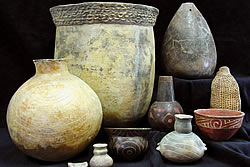
Caddo women made incredible pottery in many
shapes, sizes, and designs. They used the coil method to form
the pots. After the pots dried for a few days, sharp sticks were
used to "engrave" designs on some of them. After polishing
with a smooth stone, the vessels were fired in an open wood fire
to "bake" them and make them strong.
|
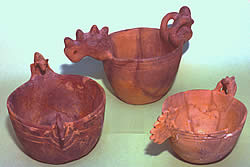
Clay creatures! Some Caddo potters used birds
and animals in their pottery designs. These "tailrider"
bowls have animal heads (such as a turkey) on one side of the
rim. Some have human-like riders perched on the opposite side.
|
|
 |
 |
|
Dogs, frogs, deer, and other animals were models
for Caddo pots. The dog vessel on the left is from a Caddo site
in Arkansas dated to around 600 years ago. The" tailrider"
bowl on the right seems to have a bear on one side and some strange
animal (bird?) head on the other.
|
|

These odd-looking pots have a secret. When you shake
them, they make a rattling noise! Want to hear
it? The rattle is made by small pebbles baked into the nubby, hollow
handles on the sides. These bowls with their strange sound may have
been carried by priests or leaders in special ceremonies. |
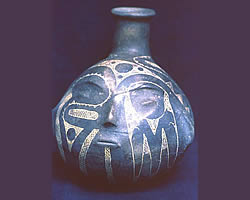
A face from the past? This "head pot"
shows a face, perhaps that of a person who lived long ago. Making
pots that resembled heads was an idea used by people who lived
along the Mississippi to the east, but the engraved design is
pure Caddo.
|
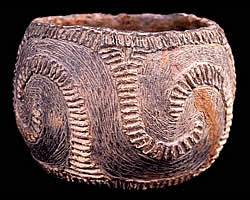
The elaborate designs on this bowl resemble
a crawling snake. Notice the fine scratch designs in between the
loops. The scratches probably were made with a pointed stick..
|
|
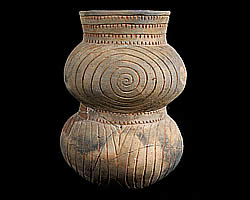
Two pots in one? Caddo potters are famous for
their creative and unusual shapes.
|
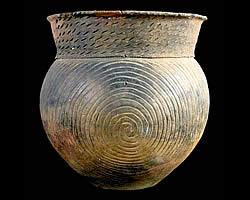
Intricate designs such as this were made using
only bare hands and simple tools made of wood and stone. Caddo
pottery was prized by people near and far.
|
|
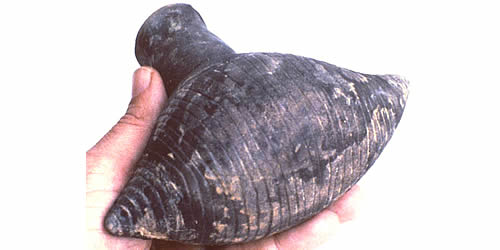
Does this bottle look like a seashell to you? The
Caddo traded with people on the coast for real marine shells, such as
the lightening whelk, and perhaps copied shell designs with their pottery.
|









